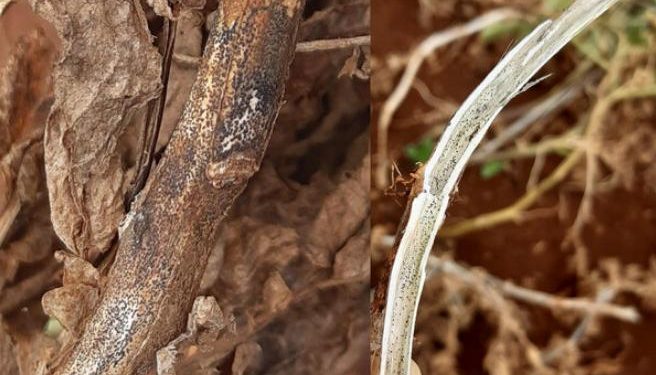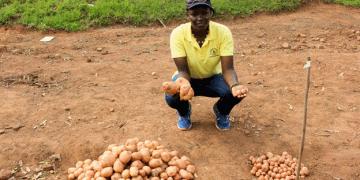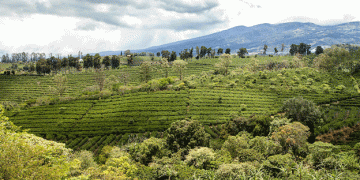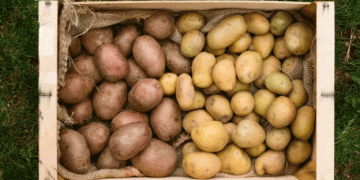Black dot (Colletotrichum coccodes) has become an economically significant potato tuber disease due to its capacity to cause early foliage death. The disease named black dot relates to the numerous black microsclerotia that the fungus can produce on its host . In August-September 2022, black dot symptoms were observed on c. 48% of potato stems (just above the soil level) , c. 27% of stolons and c. 22% of the skin surface of harvested tubers in open fields [Goodlands (20°04’13.1“S 57°39’37.0”E), Réduit (20°14’00.5“S 57°29’28.5”E) and Plaine Sophie (20°22’23.0“S 57°29’08.4”E)] in Mauritius.
Fifteen diseased potato tissues were each cut into eight small pieces using a flame-sterilised cork-borer, which were then surface-disinfected with 10% bleach for two minutes, followed by rinsing with sterile distilled water thrice, and finally plated on chloramphenicol-amended potato dextrose agar (PDA) plates. The inoculated plates were incubated at 25°C for 10 days in darkness. White colonies with flat and hyaline mycelia were observed on all inoculated plates which later developed numerous dark and spherical sclerotia on the colony in 10 days . Pure cultures were obtained by hyphal tip transfer to PDA, incubated for 10 days at 25°C in the dark, and examined for morphological characteristics. Following staining with cotton lactophenol dye using the clean slide technique, numerous, small, slightly constricted and unicellular conidia were observed with a mean length and width (n = 50) of 11.0 and 3.6 μm respectively .
The pathogenicity of one of the three isolates (P200) was confirmed on six 90-day-old potato stems and tubers. Healthy potato tubers were initially surface-sterilised by immersion in 2% sodium hypochlorite for two minutes, rinsed twice in sterile distilled water and left to dry in sterilised tissue paper before individually seeding plastic potting bags (2 litres). After 45 days, the potato plants were watered with 50 mL of a conidial suspension (106 conidia/ml) of isolate P200 next to the collar region. Non-inoculated potato plants served as a control and were watered with sterile distilled water. After 90 days, visual examinations revealed black dot symptoms on the lower parts of the stems, near the soil surface. Harvested tubers had grey patches with tiny sclerotia on the skin surface . The control potato plants did not show any symptoms on stems nor harvested tubers. The original isolates were recovered from the inoculated tubers, thus fulfilling Koch’s postulates. The experiment was repeated thrice with the same results.
DNA was extracted from 10-day-old cultures of the three isolates using the CTAB protocol . PCR amplification and sequencing were done with ITS5/ITS4 and GDF/GDR primer pairs for the internal transcribed spacer (ITS) and glyceraldehyde 3-phosphate dehydrogenase regions, respectively. BLASTn searches were done with sequences of each isolate, P86 (ITS: GenBank Accession No. OR145915; GADPH: OR232172), P136 (ITS: OR145916; GADPH: OR232173) and P200 (ITS: OR145917; GADPH: OR232174). All sequences had 99% to 100% identity with over 100 Colletotrichum coccodes isolates, for example 100% identity with isolate BBA 70879 (MT221566.1) for ITS , and 99.66% identity with isolate CBS 112987 (JX546735) for GADPH .
To the best of our knowledge, this is the first report of black dot on potato caused by C. coccodes in Mauritius. Findings of this study will help to increase awareness of this agent and assist agricultural extension officers during disease surveillance of potato fields.
Reference: Takooree, S.D., Neetoo, H. & Ranghoo-Sanmukhiya, V.M. (2023) First report of Colletotrichum coccodes causing black dot on potato in Mauritius. New Disease Reports, 48, e12224. https://doi.org/10.1002/ndr2.12224






